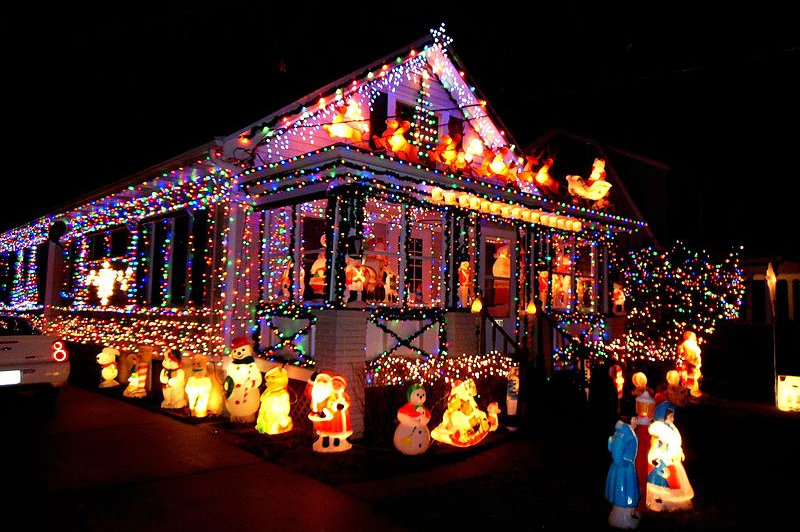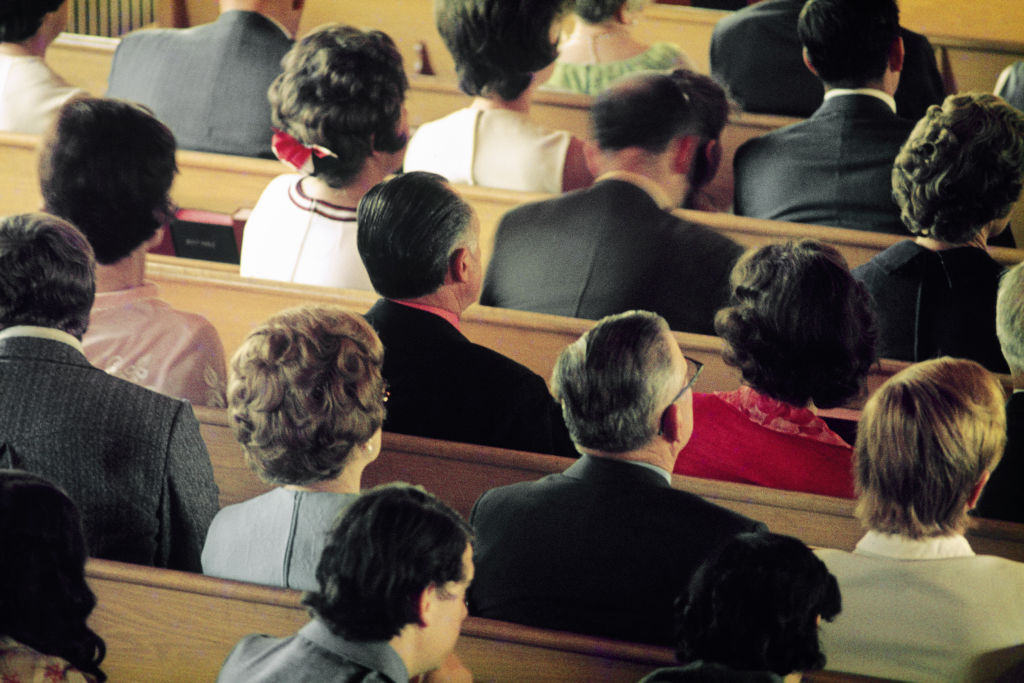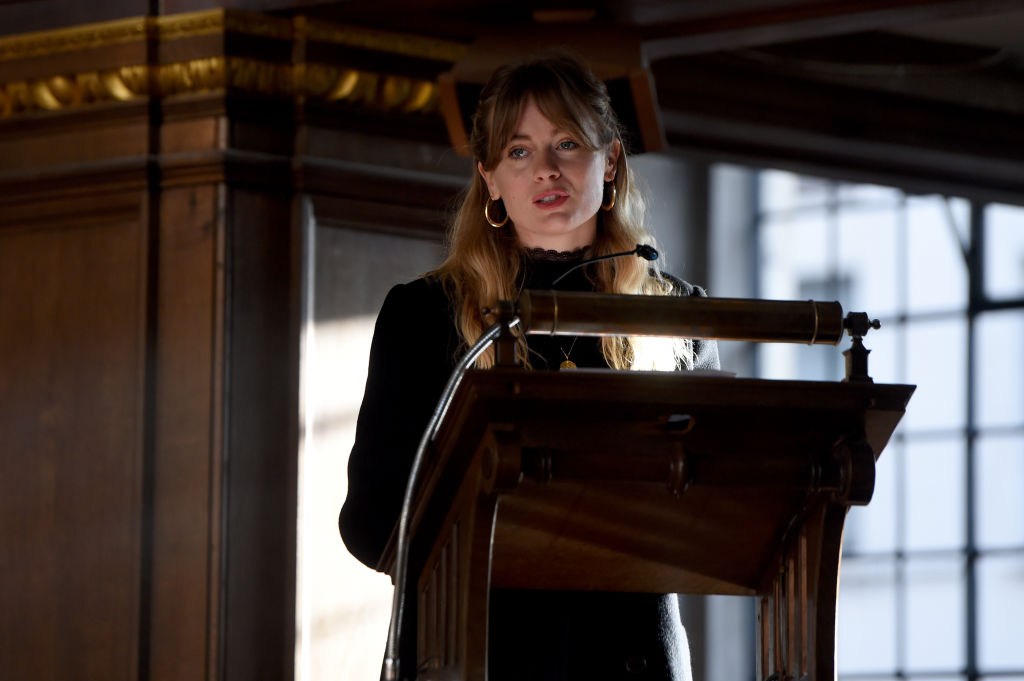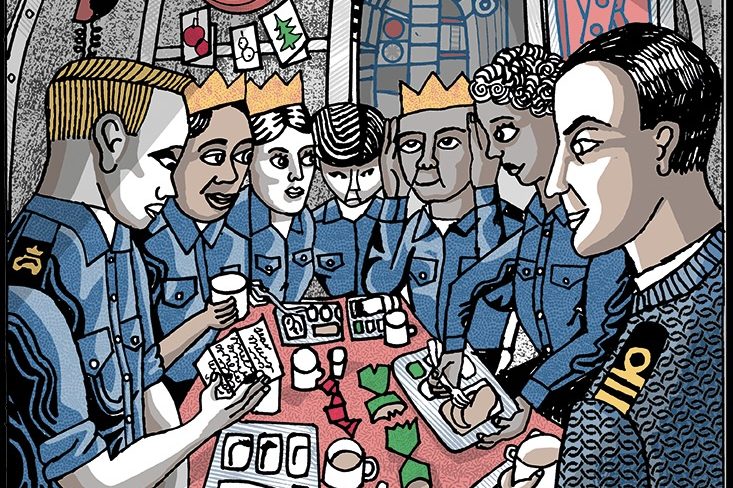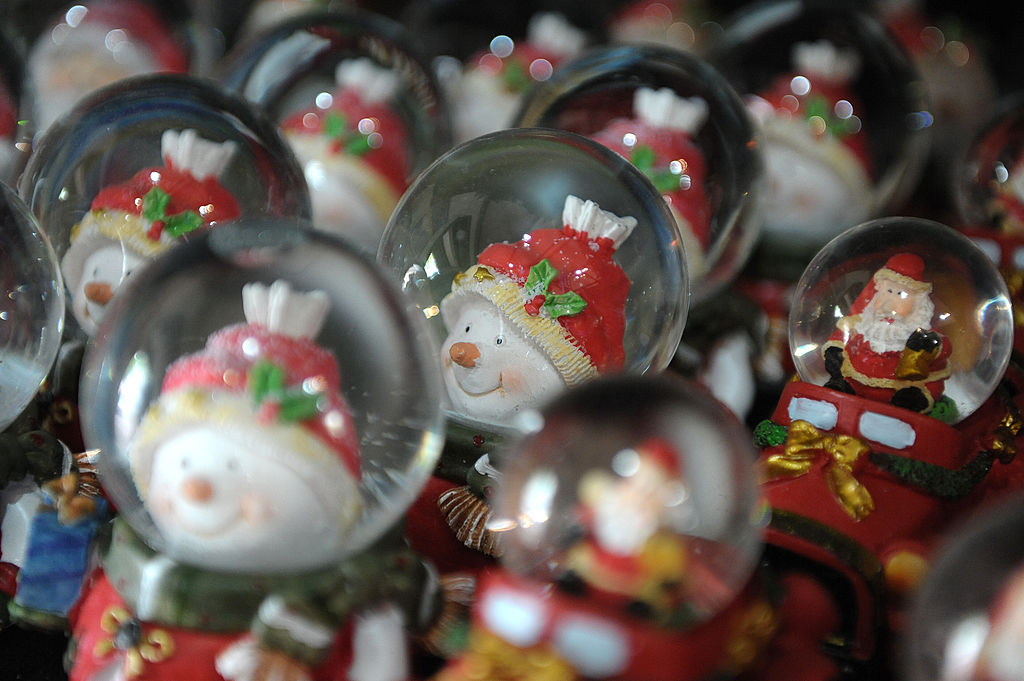The Midwest loves Christmas. Loves it with all the ingenuity in its mind and vigor in its limbs. Loves it with all the passion in its soul. All you need is a staple gun, a thousand feet of twinkly lights and, hey presto: a house roof bright enough to illuminate the season. Or guide a spacecraft down from Mars.
Only Halloween can rival Christmas in the small cities, and rival is too strong a word. Better to say that Halloween is the only other holiday for which Midwesterners are willing to bring out their staple guns and inflatable lawn ornaments. But the effort is almost half-hearted, compared to Christmas. For too much of that central column of states, North Dakota down to Oklahoma, Halloween is just the warm-up — a kind of stretching of the shoulders before the winter decorations go up. For too much of the Midwest, the ending of October means the time has come for Christmas.
All Saints hardly matters. All Souls doesn’t count. Election Day and Thanksgiving prove only brief interruptions in the months-long electric light show. The adventual part of Advent seems now entirely lost. Certainly the notion of Advent as a penitential season never had much purchase on what, for most of its history, has been the highly-Protestant and hardly-Catholic Midwest. If they sneered at the contrite Roman practices of Lent, the descendants of the Scandinavian settlers weren’t going to embrace them for Advent.
But once the Christmas displays broke the dike and flowed into the days before Advent (this year, Sunday, December 2, to Monday, December 24), the old medieval definition of the season was gone beyond all restoration. The Twelve Days of Christmas are, traditionally, the days after Christmas. Now they’re routinely referenced as the last shopping days before.
I have always thought that Christmas, perhaps even more than Easter, needs its setting in the church year. Without it we have a diminishment of language, a diminishment of culture, and a diminishment of imagination. We lose a sense of the old words anticipating the Divine’s entry into history. We lose the festival that takes its meaning from the contrast with the repentant time before it. We lose the imagination that can picture what difference it makes that the Christ child has come. Christmas Day seems now just the closing of the season, instead of its goal.
And yet, I can’t quite bring myself to reject the decorations that get hauled from Midwestern basements, attics, and garages after Halloween. The prairie is already a pretty penitential place in winter. The frozen plains have an ash-white purity in the thin dusting of snow left by the wind that pours down from Canada. A few brittle yellow grass stalks, punctuating the fields. A few leafless stands of windbreak trees, bent to old-man shapes by the relentless weather.
In that bleak landscape, all those Christmas lights aren’t so much decorations as declarations — the writing of an idea on the slate of winter. In however a vulgar and silly way, the six-foot-tall inflatable reindeer assert something that is neither vulgar nor silly. So do the life-size Santas with the small motors inside that bob their heads, the giant candy canes, and the artificial wreaths tacked to front doors.
What they say is that joy can be found even in an icy blank world of winter. Or rather — because those Midwesterners are an active people, with tough farm labor still present somewhere in their cultural memory — what all those decorations say is that the occasion for joy can be found, if we work hard enough at the preparation.
Maybe it’s even that the job is the joy. My neighbor was up on his ladder, early in November, with his staple gun, carefully arranging and tacking down line after line of outdoor lights: red and green and blue and yellow. And why not? When I stopped to shout up to him on the roof, he waved and shouted back, ‘My favorite time of the year, getting ready for Christmas. Lots to do.’
That’s not Advent, but it’s at least a little adventual.
Joseph Bottum is director of the Classics Institute at Dakota State University.



